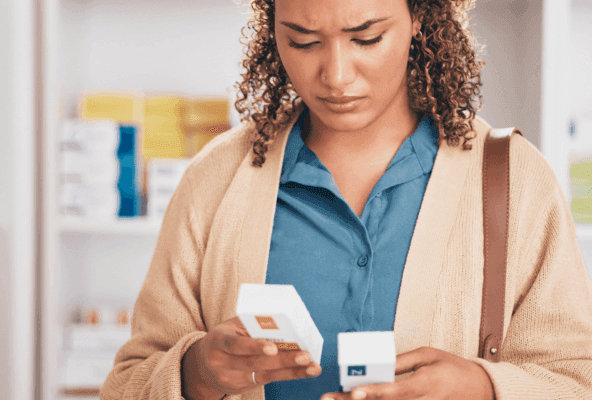Each year, as the tax season draws to a close, anticipation builds for the arrival of tax refunds. Americans often view these as a bonus windfall to spend on luxuries or long-awaited purchases, or to boost savings.
However, for many, this annual financial boon is less about discretionary spending and more about covering the bare necessities like healthcare. According to a February 2023 Bankrate survey during the 2022 tax filing season, around 75 percent of U.S. adults who expected to receive a tax refund last year believed the money is important to their overall financial situation. To ascertain the current state of tax refunds and patients, Tebra surveyed 1,000 Americans to investigate how they plan to use tax refunds to help with medical expenses.
Key Takeaways
- More than 1 in 4 people have used their tax returns for medical bills.
- 1 in 6 plan to use this year’s return to pay off medical bills.
- Nearly 1 in 10 plan to use their tax return for elective surgery.
- 82% find stress relief in anticipating their tax refunds.
Turning tax refunds into healthcare relief
Navigating personal finance in an era marked by economic fluctuations and rising costs becomes particularly challenging when healthcare expenses enter the equation. Below, we explore how individuals are using their tax refunds to ease healthcare costs, offering a window into the strategies employed to manage medical care in uncertain times.

More than 1 in 4 Americans have resorted to using their tax refunds to settle medical bills, a testament to the financial strain healthcare costs can impose. For some, this year’s tax return is already earmarked for medical debts, with 1 in 6 planning to address their healthcare obligations in this manner. Our survey also revealed that 20% of Gen Z respondents plan to use their tax returns to pay off medical bills.
Top 5 states planning to use tax returns to pay off medical bills, by percentage of respondents:
- Illinois (21%)
- Ohio (18%)
- Virginia (17%)
- Texas (17%)
- Pennsylvania (16%)
Top 5 states planning to use tax returns for elective procedures, by percentage of respondents:
- New York (12%)
- Virginia (12%)
- Illinois (11%)
- Texas (10%)
- Florida (9%)
This reliance on refunds is a financial strategy and a psychological salve: a majority of Americans (82%) report a reduction in stress knowing that their tax refund is coming. This finding highlights the tax refund’s role as a cushion against the anxiety tied to healthcare expenses. Americans will most likely use their tax refunds for dental care (44%), vision care (25%), and mental health services (21%).
Beyond medical necessities, we also found an emerging trend of people planning to use these annual funds for elective healthcare surgeries. Nearly 1 in 10 Americans plan to invest tax refunds in elective surgeries, with the top procedures being cosmetic dentistry, facial fillers, and LASIK eye surgery.
Healthcare finance and tax refunds
According to the IRS 2023 Filing Statistics, Americans had filed 162 million tax returns by December of 2023 for the previous tax year, with $334 billion in refunds issued, down 6.9% from 2022. The average refund was $3,145, down $148 from an average of $3,293 for 2022 tax filers.
As we’ve seen, tax refunds are more than just extra cash for many Americans. In 2024 tax refunds are a lifeline for managing healthcare costs, from routine medical bills to elective procedures. With a significant number relying on these funds for dental, vision, and mental health services, it’s clear that tax return refunds play a vital role in Americans’ health and well-being.
Recognizing the impact of tax refunds on health and finance, healthcare providers and others could adapt their services for better support. More flexible payment plans or better healthcare price transparency could help ease the burdens of healthcare costs and reduce the relianace of tax refunds. Implementing payment alternatives could improve healthcare accessibility and affordability, easing financial pressure on individuals and families.
Methodology
Tebra surveyed 1,000 Americans in January 2024 to explore the role of tax refunds in assisting individuals with their medical expenses. Of the respondents, 14% were Gen Z, 58% were Millennials, 24% were Gen X, and 4% were Baby Boomers. For state breakdowns, only states with 50 or more respondents were included.
About Tebra
In 2021, with a combined mission to unlock better healthcare, Kareo and PatientPop joined forces to form Tebra — a complete practice automation solution for independent healthcare providers. Tebra provides digital tools and support to help independent practices operate efficiently. To learn more about how Tebra is committed to improving patients’ and providers’ success and well-being, visit www.tebra.com.
Fair Use Statement
You may share these findings for noncommercial use, but please remember to attribute the source by linking back to this page to uphold the integrity of the information.
Subscribe to The Intake:
A weekly check-up for your independent practice

Suggested for you
Get expert tips, guides, and valuable insights for your healthcare practice









